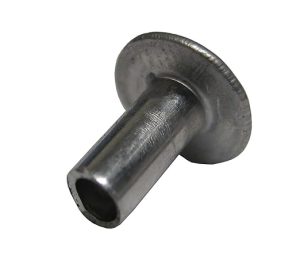
In the aerospace industry, rivets are often preferred over threaded fasteners because of their ability to resist vibrations. Rivets are permanent fasteners that, once installed, can’t be easily removed. Threaded fasteners, on the other hand, can loosen over time when exposed to vibrations.
There are different types of rivets, however. In addition to solid rivets, there are tubular rivets. Tubular rivets are characterized by a hollow shank. They are placed in precut holes, after which they are deformed with a tool. Here are five reasons to use tubular rivets.
#1) Strong Joints
You can rest assured knowing that tubular rivets create strong joints. Like all fasteners, they are used to join two or more parts. You can drive a tubular rivet through a set of parts, and after deforming the shank, the parts will be joined. But tubular rivets create particularly strong joints thanks to their hollow shank. When deformed, the shank will expand and wrap around the back side of the parts, thereby securing the joint and protecting against vibration-related loosening.
#2) Lightweight
Tubular rivets aren’t just strong; they are lightweight. With their hollow shank, they weigh less than many other types of fasteners, including solid rivets. This is one of the reasons why tubular rivets are used extensively in the aerospace industry. Lightweight fasteners promote better fuel efficiency, which translates into cost-savings benefits for airliners and operators.
#3) Easy to Install
Some people assume that tubular rivets are difficult to install, but this isn’t the case. All you need is the right tool. Installation involves placing the tubular rivet all the way through a hole. The head should be flush against the front of the material, and the shank should be visible on the back side. You can then use a tool, such as a rivet setter or hammer, to deform the hollow end of the shank.
#4) Available in Different Styles
Not all tubular rivets are the same. While they all feature a hollow shank, tubular rivets are available in different styles. Semi-tubular rivets, for instance, have a partially hollow shank, which increases their total weight but allows for less force during installation. Split rivets feature a split at the end of the shaft, which expands during installation. Finally, full tubular rivets have an extra deep shank that typically extends up to the head.
#5) Clean Aesthetics
Another reason to use tubular rivets is aesthetics. They look cleaner and more polished than many other types of fasteners. When installed correctly, both the head and the deformed shank offer a clean appearance. Threaded fasteners, in comparison, will often have an exposed shank sticking out the back of the material in which they are installed.



